(14907 products available)

















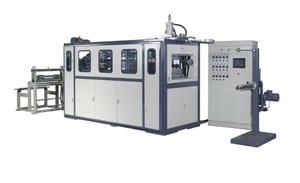









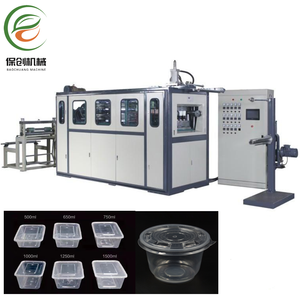
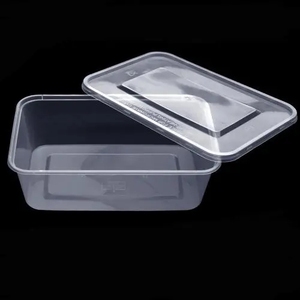
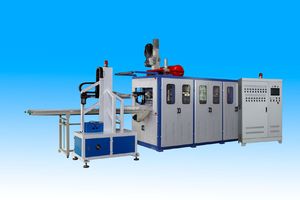

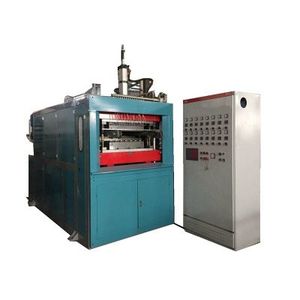
















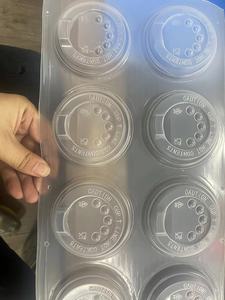






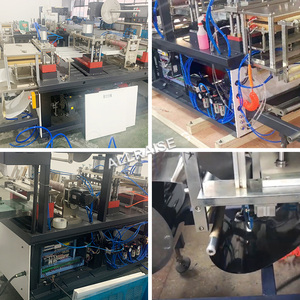



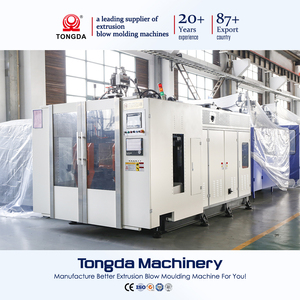
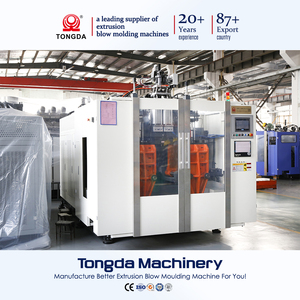









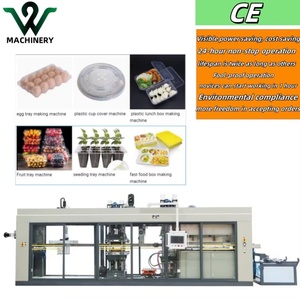


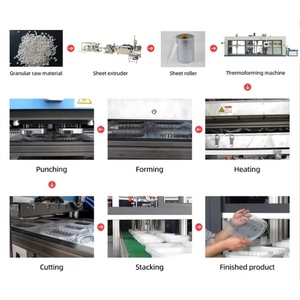








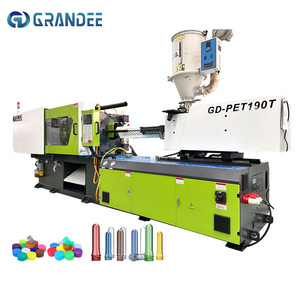
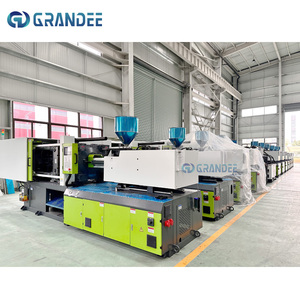

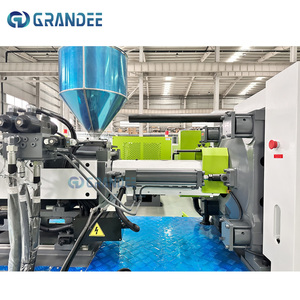

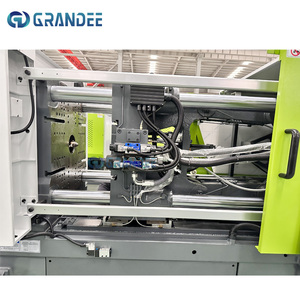


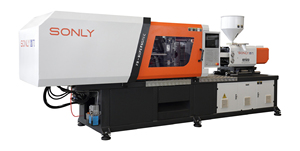



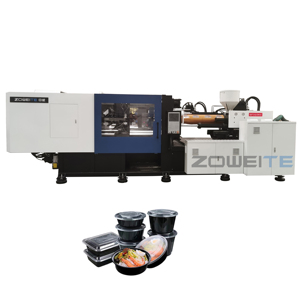




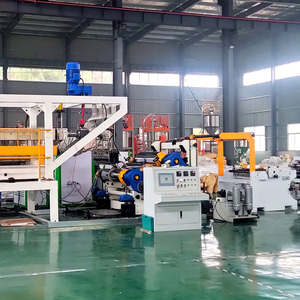







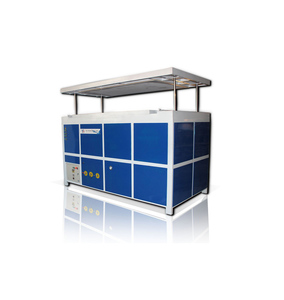
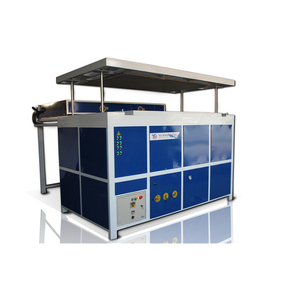





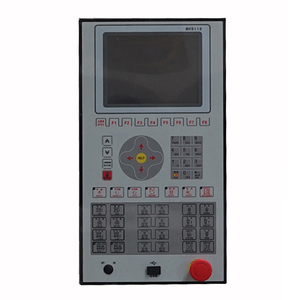





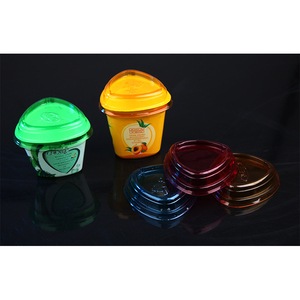




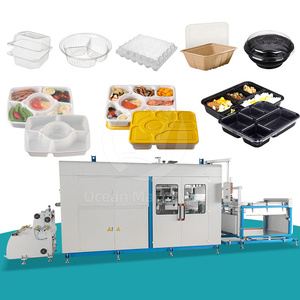

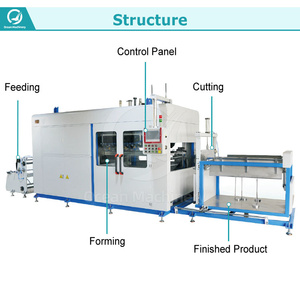
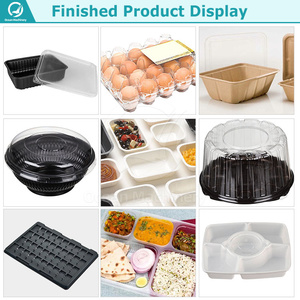








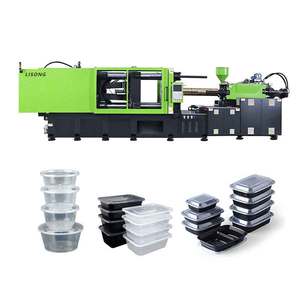





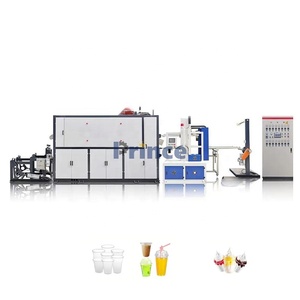
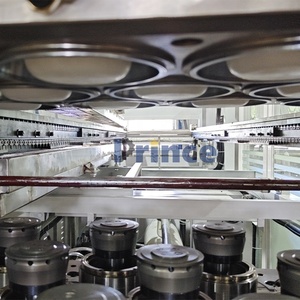




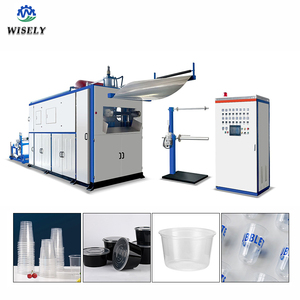


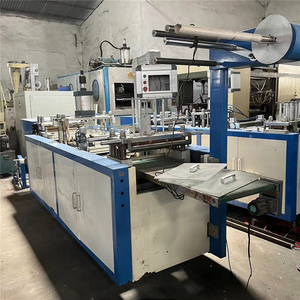

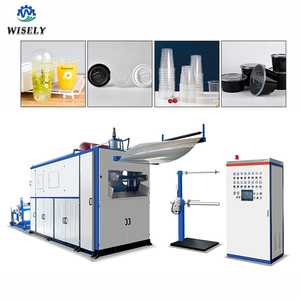

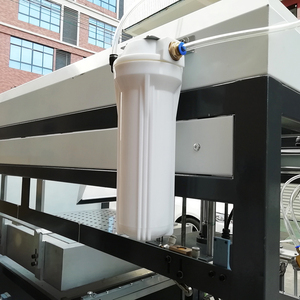



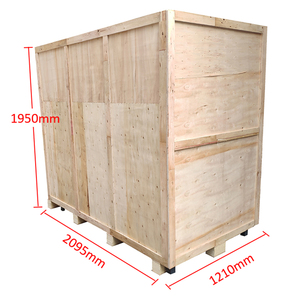













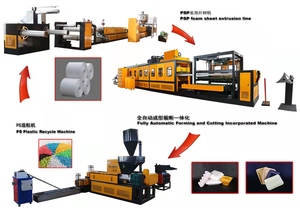


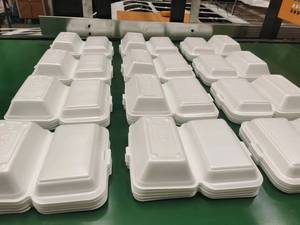





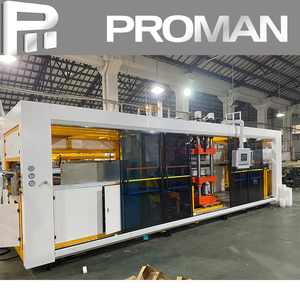








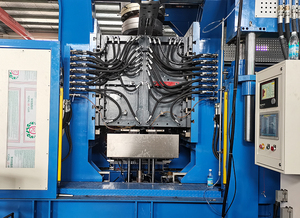




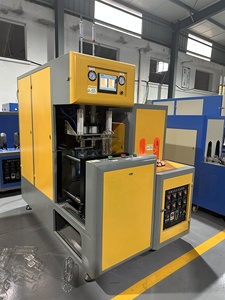



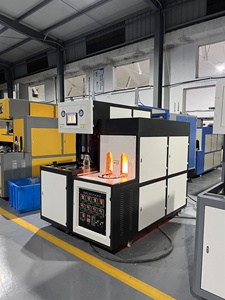
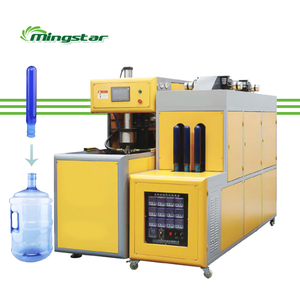




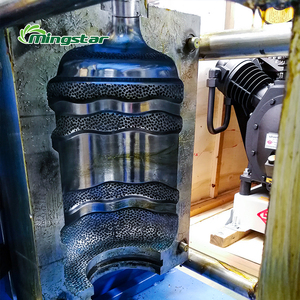




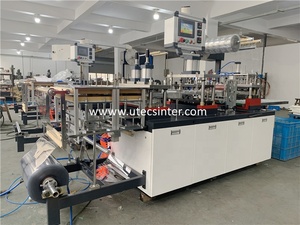

The types of plastic container making machines include blow molding machines, injection molding machines, inversion molding machines, and stretch-blow molding machines. One of the most popular methods for producing plastic containers and bottles is blow molding. During this process, a heated plastic tube, known as a parison, is produced by injection or extrusion, and then it is placed into a mold. After that, the plastic is inflated until it takes the shape of the container or bottle. There are two-step processes for blow molding: injection-extrusion and stretch-extrusion. The injection-extrusion method involves injecting the molten plastic into a specific shape and then blowing air into it to fill the mold. In contrast, the latter method first involves injecting the molten plastic into a container, followed by the blowing of air to fill the final shape of the container or bottle.
The manufacturing of plastic containers is also accomplished through injection molding machines. This process involves injecting plastic material, such as polyester, PP, and PBT, into a mold cavity that gives the desired shape to the container. The injection of the plastic material is combined with heat until the material fills the mold cavity completely. Once the plastic cools and solidifies, the mold is opened, and the finished container is ejected. The advantage of injection molding is that it is a rapid production method for creating small plastic containers with complex shapes and high precision. Moreover, the production can be up to 5000 pieces a day, making this method an efficient solution for high-volume production.
Inversion molding is also commonly used for producing plastic containers. This process involves using a heated platten that is placed into a mold for the desired shape of the container. After that, the heated plastic is injected into the mold. Once the plastic cools off into the container shape, the mold opens and the finished container is ejected. This method is quite efficient at production like the injection molding techniques are. Moreover, this method is great for manufacturing hard plastic containers such as tubs, pails, and boxes.
An additional technique to manufacture plastic containers is through stretch-blow molding machines. To start with, a preform is produced which after is heated and then stretched vertically with a stretching rod. After that, air is blowed into the heated preform which is then expanded into the final container shape. This molding method is especially popular for producing plastic bottles that have a long neck and small base, like water and soda bottles.
Specifications of plastic container manufacturing machines may vary depending on the type and model, as well as on the specific use of the containers.
Production capacity
The production capacity of the machine refers to the number of containers it can produce in an hour. On average, this number may vary from 1000 to 3000 containers.
Power
The power of the machine used to manufacture plastic containers is usually measured in kilowatts (kW) and may vary depending on its size and production capacity. On average, the power of such machines may range from 10 kW to 50 kW.
Dimensions
The dimensions of the container-making machine will depend on the type and model of the equipment. For example, an injection molding machine may have dimensions of 5000 mm x 2500 mm x 3000 mm.
Weight
Plastic container-making machines are heavy due to the large steel plates used in their construction and the robust components used to ensure their stability during high-speed operations. The weight of a small to mid-sized machine can range between 3,000 to 5,000 kg or more.
Raw materials
Machines that produce plastic containers can work with various types of plastic. For example, for HDPE containers manufacturing, a specific kind of HDPE plastic is used, while PET, PVC, and PP are used for PET, PVC, and PP containers, respectively. The adaptability of these machines to different types of plastic allows for the production of containers with diverse characteristics and functionalities.
In order for the machines to be in good working condition and to produce the containers with the desired quality, they need to be taken care of properly. Regular maintenance is important so that the machines can work without complications, and this ensures that the life span of the equipment is extended.
Periodic inspections
Manufacturers recommend periodic inspections and maintenance of plastic container-making machines. During the scheduled inspections, specialists check the overall condition of the machine and its individual components and systems.
Lubrication
Proper and regular lubrication of the moving parts of the machines is essential to ensure reliable and smooth operation and to extend the life of the equipment.
Plastic container manufacturing machines have many uses in the industrial sector. Here are some of them:
Packaging Industry:
A plastic bottle-blowing machine makes bottles for the packaging industry. These machines make packaging containers for food, beverages, personal care items, household products, and industrial goods.
Food and Beverage Industry:
In the food and beverage industry, plastic drinking bottles made from a bottle-making machine serve as the primary containers for juices, water, soft drinks, dairy products, sauces, and other food items.
Pharmaceutical Industry:
The pharmaceutical industry uses plastic container-making machines to produce medicine containers. These machines make secure and chemically resistant containers for pills, syrups, ointments, and other pharmaceutical products.
Cosmetics and Personal Care Industry:
In the cosmetics and personal care industry, plastic container-making machines create containers for products like shampoos, conditioners, lotions, creams, and perfumes.
Automotive Industry:
Automotive industries use plastic container machines to make automotive parts and containers for automotive fluids like engine oil, brake fluid, and coolant.
Construction Industry:
Construction industries use plastic container-making machines to create construction containers and other products used in building and construction. They are durable and useful for storing and mixing construction materials.
Before investing in a plastic container production line, customers should consider the equipment's versatility. Retailers prefer machines that can produce different types of containers for various applications. Check if the equipment can use multiple types of raw materials. Some machines are compatible with bio-based, recycled, and single-use polymers.
Another essential factor is the machine's energy efficiency. Energy-efficient production lines help reduce operational costs and promote sustainable production practices. Look for features like automatic shut-off and temperature control systems that optimize energy consumption without compromising product quality.
Consider the production capacity of the plastic container manufacturing machine. Customers should choose machines that match their production requirements. A small-scale production line may suffice for startups and small businesses. However, those with large-scale production and higher demands need to invest in high-capacity machines. Such machines have faster cycles and continuous production.
Evaluate the level of automation offered by the plastic container-making machine. Fully automated production lines can streamline operations, reduce labor costs, and improve production efficiency. However, semi-automated machines provide more flexibility and allow manufacturers to adjust production depending on their present demands.
Check the after-sale support when choosing a plastic container-making machine. Manufacturers need to be confident that suppliers will offer the necessary support after sale in case of demand for maintenance services. Surrounding network and supply chains are also critical for extra support.
Ensure the machine complies with international standards for quality manufacturing. The products from the container-making machine should meet global requirements to avoid non-compliance issues that could lead to product recalls and damage to the brand's reputation.
Q1: What types of plastic containers can a plastic container making machine produce?
A1: Plastic container making machines can produce various types of plastic containers, such as:
Q2: What is the production capacity of a plastic container-making machine?
A2: The production capacity varies depending on the type of machine, the container being produced, and the machine's size and specifications. Plastic container-making machines can be produced at different rates. For example, in an hour or a day.
Q3: What materials are compatible with plastic container-making machines?
A3: Materials such as PP, PS, PET, PVC, HDPE, and Bioplastics are used with the plastic container-making machine. They are streamlined, easy to operate, pliable, and possess high tensile strength.
Q4: What is the process of using a plastic container-making machine?
A4: Production of plastic containers will involve these general steps: Pre-processing, Molding, Cooling and Solidifying, Post-Processing, Quality Control, and Packaging.
Q5: What are the advantages of using a plastic container-making machine?
A5: Plastic container-making machines offer several advantages, including High Production Efficiency, Cost-Effectiveness, Automation, Flexibility, Quality Control, and Environmental Solutions.